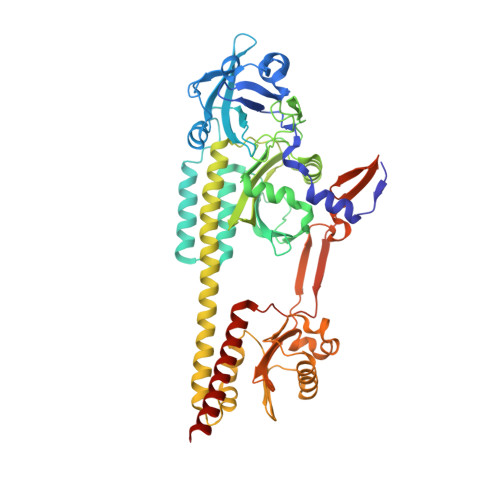Spectroscopy and a High-Resolution Crystal Structure of Tyr263 Mutants of Cyanobacterial Phytochrome Cph1.
Mailliet, J., Psakis, G., Feilke, K., Sineshchekov, V., Essen, L.-O., Hughes, J.(2011) J Mol Biology 413: 115
- PubMed: 21888915
- DOI: https://doi.org/10.1016/j.jmb.2011.08.023
- Primary Citation of Related Structures:
3ZQ5 - PubMed Abstract:
Phytochromes are biliprotein photoreceptors that can be photoswitched between red-light-absorbing state (Pr) and far-red-light-absorbing state (Pfr). Although three-dimensional structures of both states have been reported, the photoconversion and intramolecular signaling mechanisms are still unclear. Here, we report UV-Vis absorbance, fluorescence and CD spectroscopy along with various photochemical parameters of the wild type and Y263F, Y263H and Y263S mutants of the Cph1 photosensory module, as well as a 2.0-Å-resolution crystal structure of the Y263F mutant in its Pr ground state. Although Y263 is conserved, we show that the aromatic character but not the hydroxyl group of Y263 is important for Pfr formation. The crystal structure of the Y263F mutant (Protein Data Bank ID: 3ZQ5) reaffirms the ZZZssa chromophore configuration and provides a detailed picture of its binding pocket, particularly conformational heterogeneity around the chromophore. Comparison with other phytochrome structures reveals differences in the relative position of the PHY (phytochrome specific) domain and the interaction of the tongue with the extreme N-terminus. Our data support the notion that native phytochromes in their Pr state are structurally heterogeneous.
- Institute for Plant Physiology, Justus Liebig University Giessen, Senckenbergstrasse 3, D35390 Giessen, Germany.
Organizational Affiliation:





















